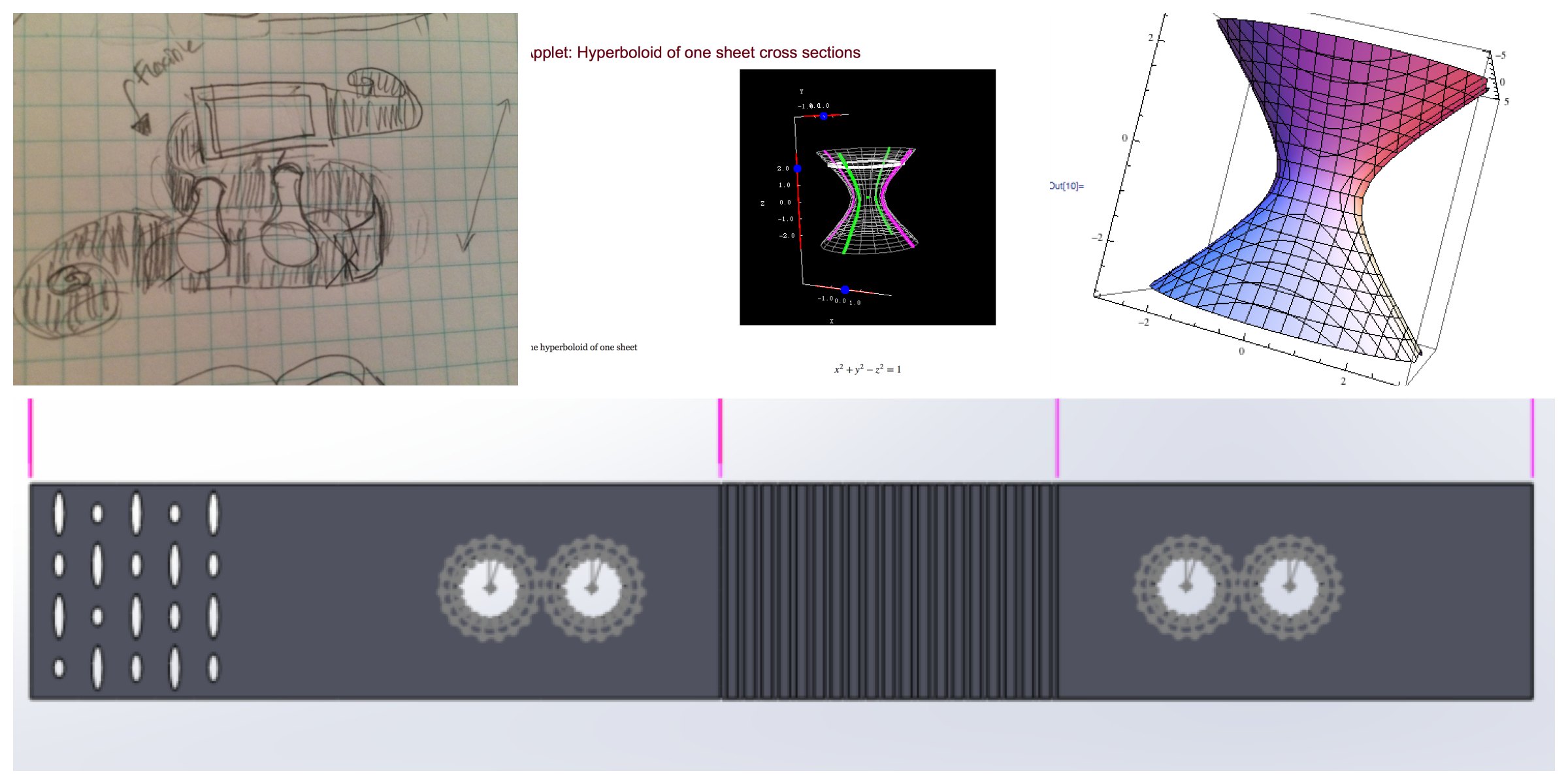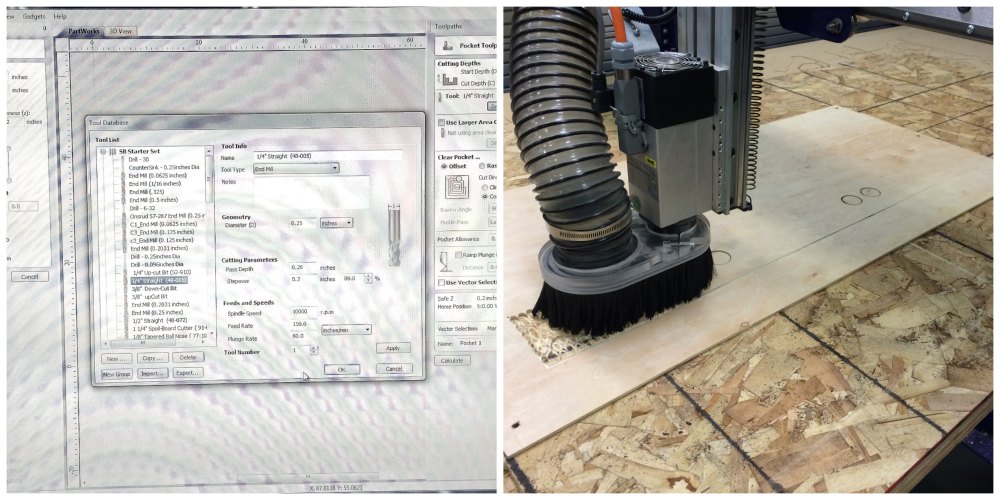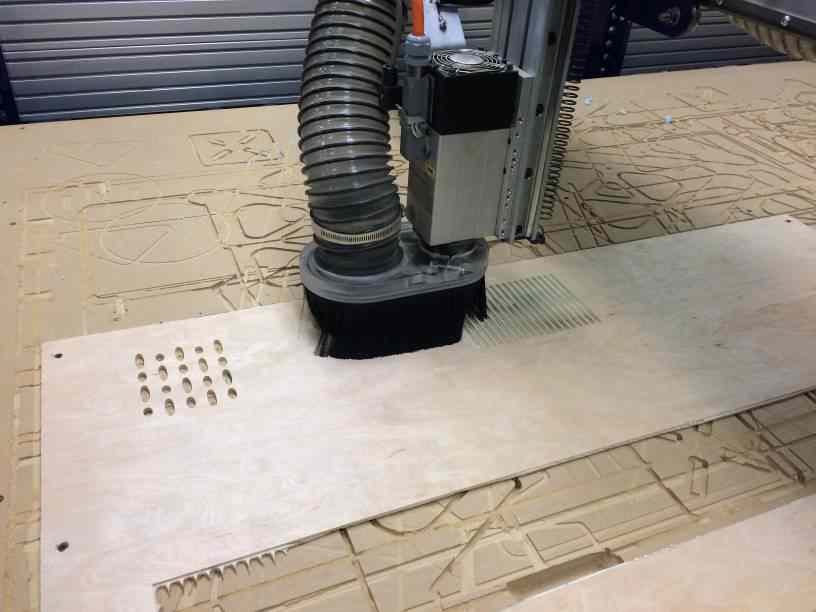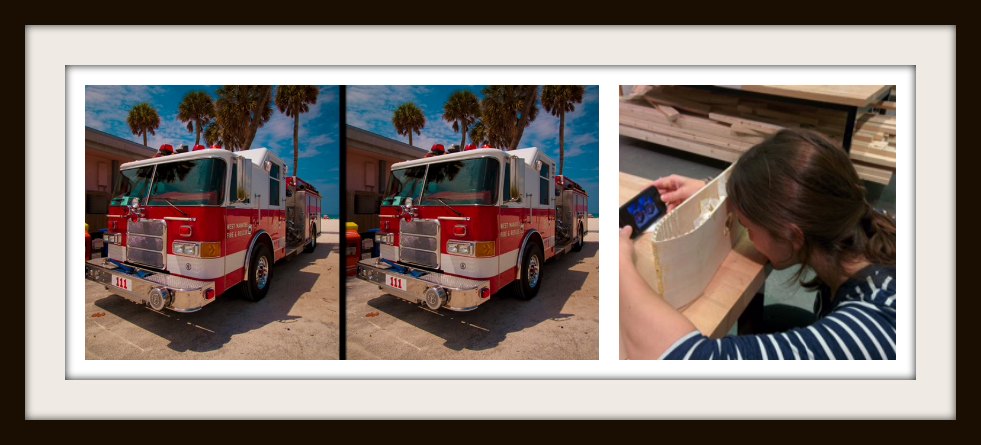


Lately in my quantum computation course we've been talking about blackholes and time travel. Models for blackhole and wormhole topography are quite beautiful (you may have seen images similar to the one pictured above). In a photography course I took in college, we also spent some time learning about the history of stereoscopic imagery. Beautiful wooden stereoscopic viewers like the one pictured above were commonplace in the early 20th century. Place two photos side by side that were taken a few inches apart, create a set up in which each eye sees only one image, and a convincing illusion of depth ensues.
Virtual reality is making a comeback. We can now generate stereoscopic video, and stereoscopic games. In fact, at the Google I/O conference back in June, attendants received a Google Cardboard, a super cheap cardboard-based virtual reality headset based on the principles of stereoscopic imaging. So, I excitedly set off to make a futuristic stereoscopic viewer inspired by the geometry of wormholes.

I sketched out my desired design by hand, and drew the pieces on Solidworks. I figured the best way to achieve the wormhole shape would be to play with the functions often used to represent wormholes (hyperboloids of one sheet...though in reality these designs are far more complicated, and based on three dimensional projections of four dimensional space. Objects in four dimensional spacetime follow geodesics which in certain cases have analytical sollutions. In certain models, this results in a two dimensional surface embedded in three dimensional space resembling a hyperboloid. To calculate these geodesics in the first place, the simplest realistic wormhole metric is used, which looks something like ds^2 = −dt^2 + dr^2 + (b^2 + r^2)(dθ^2 + sin^2 θdφ^2) with b equal to the throat of the wormhole). In any case, rather than trek too deeply down this path, I used a simplified hyperboloid model and plugged in various z values we could determine the appropriate radii. I played around with a Mathematica demonstration project for wormholes, and also plotted my own shapes in Mathematica to help visualize the geometry I was seeking.

I made every possible mistake while milling! Here are some things to remember:
Don't just choose your tool! You must verify settings within the selected tool. My 1/8 inch endmill settings caused a 20 minute job to take 2 hours :(
Don't forget to account for the width of the tool in your designs. My attempt at patterning the wood completely failed the first time around. Triple check your tool paths, especially for jobs that have multiple tool paths. I failed to select certain lines at one point, and selected the wrong line at another point.
Some key jiggling is required for getting the spindle to run. Don't forget that different endmills require different spindle speeds! 10,000 RPM for 1/4 inch endmill, 12,000 RPM for 1/8 inch endmill
Don't forget to add tabs! Some of my smaller circular cross sections got sucked up into the machine at first since I failed to add tabs.

Next step was to attempt to bend the wood. It appeared to bend well when running under hot water and going very slowly. I managed the 180 degree bend! I left it to dry over night with the edges attached to a piece of foam. When I came in the next moring, the piece was still in tact, but it must have been brittle because after a little bit of handling, it cracked :( This was a real shame! Perhaps I should have used some advice like- make sure it dries evenly by putting it in a mold. It seemed like the bult of the strain was applied to the central joint, and I couldn't manage to distribute the strain across all of the kerfs.

I tried a second time. The patterning worked out this time (though was definitely not bendable, which was my original hope). This time, the kerfs cracked very quickly though. Perhaps I didn't handle them with enough care (10 hours milling your parts and helping others mill parts is exhausting and frustrating!! =) )

I cut the circular cross sections for the first time. In my first attempt, many got sucked into the machine. In my second attempt (after adding tabs) I realized that my of my circles were too small for the tool width :( This is problematic since the size of the eyehole is what dictated the size of the largest cross section of my hyperboloid, and since I'd now only have the larger circles, my shape would no longer look as wormhole-like, nor would the stack span the ~4 inches needed. I also seem to have not cut my largest circle large enough (jumped to the one smaller than the eye, silly mistake). This meant that I couldn't even easily attach the stack. What a mess! Advice: it is really worth some careful thought along the way to ensure that your pieces will all assemble as anticipated. At this point I'd exhausted my machining time, my parts had cracked, and only half my circles were functional. Time to get out the paper mache, glue, and whip something quasi functional together.
